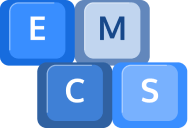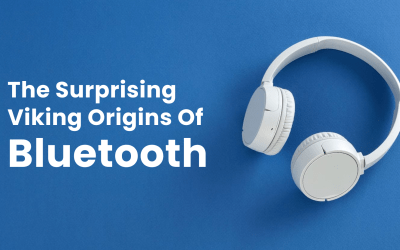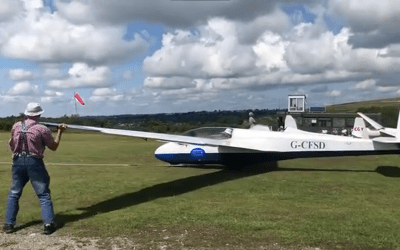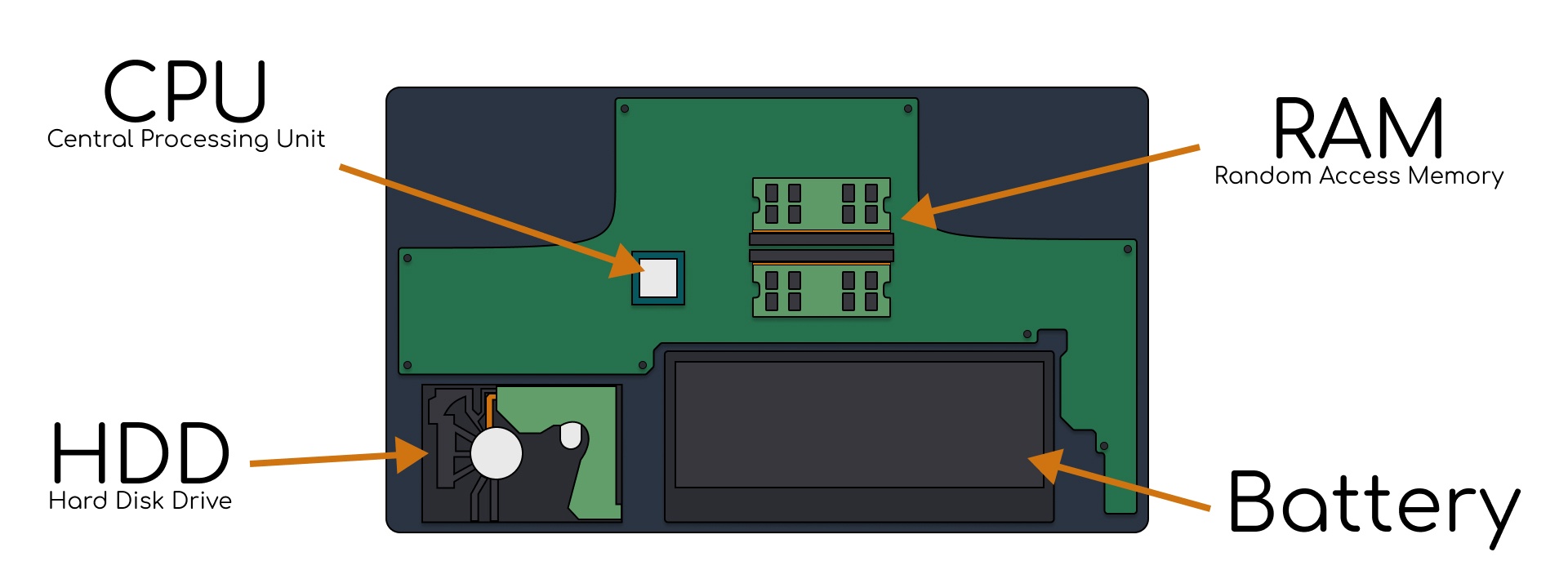
A computer is an electronic device that processes information using a set of instructions called software. The software is written in a language that the computer can understand and execute, such as C++, Java, or Python. The instructions tell the computer what to do, how to do it, and when to do it.
There are five main components that make up a computer: the CPU, RAM, storage, input devices, and output devices. In a moment we’ll take a closer look at each of these components.
First though, what happens when you type something into your keyboard? How do the letters appear on your screen?
When you type something into a computer, the process of how it appears on the screen can be broken down into a few basic steps:
1. Typing
When you type something on your keyboard, each key press generates an electrical signal that is sent to the computer’s processor, also known as the CPU (Central Processing Unit).
2. Processing
The CPU receives these electrical signals and converts them into binary code, which is a series of 1s and 0s that the computer can understand.
3. Storage
The binary code is then stored temporarily in the computer’s memory, known as RAM (Random Access Memory). The computer needs to store the code in memory so it can be quickly accessed and processed.
4. Output
Once the binary code is stored in RAM, it is sent to the computer’s graphics card, which converts the code into pixels that can be displayed on the screen. The graphics card sends the pixel data to the monitor, which displays the image on the screen.
All of these steps happen very quickly and almost simultaneously, so the text you type appears on the screen almost instantly after you type it. The speed at which this happens depends on the processing power of your computer, the amount of RAM you have, and the speed of your graphics card.
Computer Components
Now let’s look in a bit more detail at the components mentioned just now…
CPU (Central Processing Unit)
The CPU is the brain of the computer. It is responsible for executing the instructions in the software. The CPU is made up of several components, including the control unit, arithmetic logic unit, and registers. The control unit manages the flow of data between the CPU and other components of the computer. The arithmetic logic unit performs mathematical operations, such as addition and subtraction. Registers are temporary storage locations within the CPU that hold data that is being processed.
RAM (Random Access Memory)
RAM is the short-term memory of the computer. It stores data that the computer is currently working with. The more RAM a computer has, the more data it can work with at one time. When the computer is turned off, the data in RAM is lost. This is why it’s important to save your work frequently!
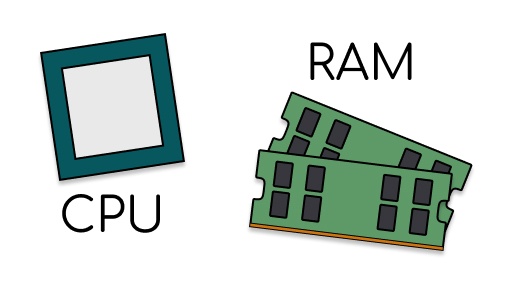
Storage
Storage is where the computer stores data for the long term. There are two main types of storage: hard disk drives (HDD) and solid-state drives (SSD). HDDs are slower than SSDs, but they have more storage capacity. SSDs are faster than HDDs, but they are more expensive.
Input Devices
Input devices are used to input data into the computer. Examples of input devices include the keyboard, mouse, and microphone. The keyboard is used to input text and commands. The mouse is used to move the cursor on the screen and select items. The microphone is used to input audio data.
Output Devices
Output devices are used to display or output data from the computer. Examples of output devices include the monitor, speakers, and printer. The monitor displays text and graphics. The speakers output audio. The printer outputs hard copies of documents.

Software
Software is the set of instructions that tell the computer what to do. There are two main types of software: system software and application software. System software includes the operating system and device drivers. The operating system is the software that manages the computer’s resources and provides a user interface. Device drivers are software that allow the computer to communicate with hardware devices, such as printers and scanners. Application software includes programs like word processors, spreadsheets, and web browsers.
Conclusion
In summary, a computer is an electronic device that processes information using software. The main components of a computer are the CPU, RAM, storage, input devices, and output devices.
The CPU is the brain of the computer and executes the instructions in the software.
RAM is the short-term memory of the computer, and storage is where the computer stores data for the long term.
Input devices are used to input data into the computer, and output devices are used to display or output data from the computer.
Finally, software is the set of instructions that tell the computer what to do.
If you have any queries about your PC, do not hesitate to call us on 01984 633603 or email us at [email protected]
